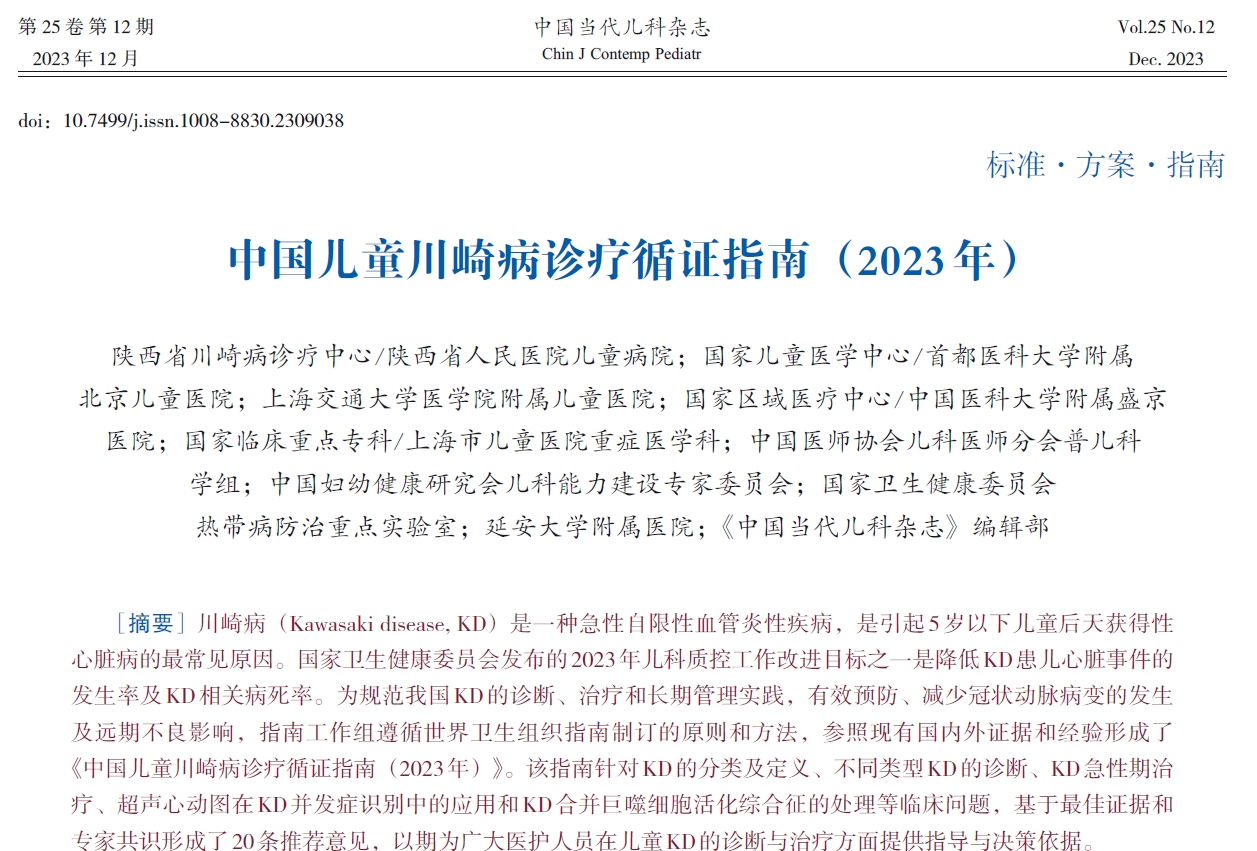 PDF(823 KB)
PDF(823 KB)


Evidence-based guidelines for the diagnosis and treatment of Kawasaki disease in children in China (2023)
Center for Diagnosis and Treatment of Kawasaki Disease/Children's Hospital of Shaanxi Provincial People's Hospital, National Children's Medical Center/Beijing Children's Hospital, Capital Medical University, Children's Hospital, Shanghai Jiao Tong University School of Medicine, National Regional Medical Center/Shengjing Hospital of China Medical University, National Clinical Key Specialty/Department of Intensive Care Medicine, Shanghai Children's Hospital, General Pediatric Group of Pediatrician Branch of Chinese Medical Doctor Association, Expert Committee of Advanced Training for Pediatrician, China Maternal and Children's Health Association, National Health Commission Key Laboratory for Tropical Disease Prevention and Control, Yan'an University Affiliated Hospital, Editorial Department of Chinese Journal of Contemporary Pediatrics
Chinese Journal of Contemporary Pediatrics ›› 2023, Vol. 25 ›› Issue (12) : 1198-1210.
 PDF(823 KB)
PDF(823 KB)
 PDF(823 KB)
PDF(823 KB)
Evidence-based guidelines for the diagnosis and treatment of Kawasaki disease in children in China (2023)

Kawasaki disease / Clinical practice guideline / Diagnosis, Treatment / Child